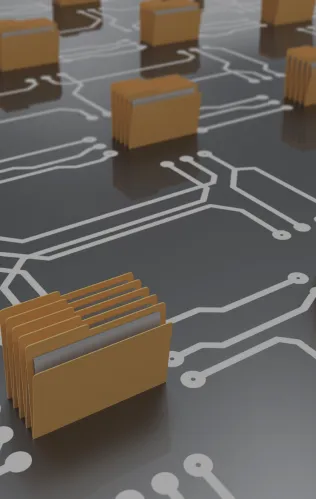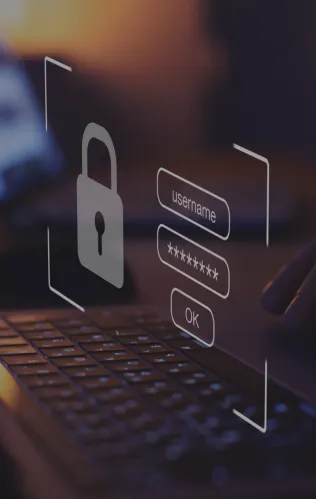Technology nowadays has become a huge part of our lives and especially for the academic sector. Since the 90s, where schools had basic desktop computers, now schools have laptops and VR in the classroom as a norm, we can say that in a very brief time the progress we can see is staggering. This evolution in technology over the past few years has had a tremendous effect both on teachers and students. The classroom, as it was, is already changing and it is being shaped by the progression of technology.
This evolution, of course, has influenced all aspects of the school experience: from admissions to absences and so on. But the question is: is a paperless school possible? Would the school system change so much in the forthcoming years that paper will be unnecessary to the teaching process?
The era of the digital transition
Α few years ago a paperless classroom would have sounded like a great concept but a little unrealistic. And surprise: this is exactly what is happening today! This is done by digitizing teaching material and transferring it into a cloud-based system to remove the paper and introduce an online digital version of these materials. A cloud-based solution can provide solutions to a multitude of problems.
Paperless schools can surely have significant advantages. The paperless idea and approach of technology are merely for enriching the educational experience and to align itself with the fast progression of technology. In other words, to improve the learning experience. But everything has its benefits and its disadvantages. Below we will see how the paperless idea will presumably affect both positively and negatively the learning process and certain scenarios that can come up with this technological advancement
How it’s done
Paper is eliminated in school by replacing all that was being done until now on paper with online systems, such as replacing the admission process with a student information system. In addition, typed letters are being replaced with emails and reference books are being uploaded and made readily available in a digital format in place of physical books. Another way to eliminate paper is to automate paper-based processes that rely on forms, applications and surveys to capture and share data.

The benefits
The benefits are many, thus more and more schools lean towards the use of Student Information Systems for the improvement of their institution.
Time-saving
In any job, paperwork is the biggest timewaster let alone when it comes to school administration. With a digital platform, the school staff can save valuable time when it comes to grading, informing and giving feedback to students and parents. The administrative staff can handle manual filings, various printing tasks and sending letters home in a more immediate way. In general, going paperless it’s also an alternative to publishing announcements and reaches out to students easily. In other words, any time-consuming process is simplified and as the saying goes “time is money”.
Resource-saving
A lot of money is being spent every year in schools on paper. And when we say a lot- A LOT. Research showed that a school consumes around 1,000 sheets of paper per student each year. And, it goes without saying, but which school doesn’t want more resources in their possession? A lot of these savings could pay for teachers’ salaries, classes, excursions or computers to assist educational goals.
It is an environment-friendly approach
Paper is one of the most consumed resources in the world and also does a huge amount of damage to our environment without realizing it. What better way to help the environment (especially now that it’s literally deteriorating) than reducing paper usage? A huge amount of paper is being used every day by schools and by that we mean piles of forgotten printouts, surplus photocopies and letters to parents that never make it home. It also promotes the idea of environmental consciousness to students and how the school has taken action to help.
Reclaim space
Using paper is not only harmful to the environment but it takes a lot of space too. We all remember how our schools had walls filled with bookshelves full of old papers; that probably was never used. With that being said, classes and school offices are decluttered resulting in surplus space to be used for something else. For example, additional offices could develop or even new classrooms as well.
Organization improvement
A paperless system gives the huge advantage of posting class schedules online in order for everyone to have access to them. In that way, the case of misplacement or misinformation is being majorly diminished. In other words, all the data that is needed for a school to function properly are all in one place. This will have an impact both on teachers and students, as teachers will be more efficient and collaborative in their planning and moreover, the school administration will have a clear view on what is actually being taught in the classroom. In addition, the probability of a student’s work is missing is greatly diminished too.
Document security
Having documents stored in a cloud-based system is generally more secure than having paper documents in physical form lying around; with the possibility of somebody stealing them or misplacing them. In a cloud-based system, access to these documents can be controlled centrally and even deleted from mobile devices at the click of a button. With paperless document management, staff can access the information they need to from anywhere in the school, saving yet more time. Even better, in the event of a disaster such as a fire or a flood, all your electronic documents are retrievable. As well as, in a flood, the school’s information would be safe and sound in the cloud.
Preparation of students for the workplace of the future
By involving students more and more with technology, we prepare them, in a way, for a highly automated environment. In general, a huge amount of processes in a workplace have been already automated, so by doing so in the educational field it is a natural follow-up. An employer won’t expect workers to use a paper planner to organize themselves, or to record their performance targets manually – so why do we expect it of our pupils? The greatest preparation for students would be to make everything be on a digital platform. And since children, nowadays, use tablets and smartphones from the age of 3, this would probably be an easier way for them to learn and handle school obligations.
Possible downside
There’s a flip side to everything, including why a school should go paperless. So, let’s see what the possible disadvantages are:
Lack of resources
Some students could lack internet access in their homes which can be detrimental to their academic progress if a school goes paperless. Both the school and the children’s parents again might not have the resources to acquire the equipment to make a paperless school possible. Schools should buy certain software in order to go paperless such as student information systems and certainly laptops and computers for every student.
Loss of face to face interaction
Some students require face-to-face interaction to activate effective learning. This is difficult to lose for students who require a structured lesson and often trail off course. This loss of connection can be compensated through many different tools such as Skype, Web broadcasting, or internet conferences.
Difficulties for students with special needs
Some special needs students need the supervision or interaction of a traditional classroom. Also, when it is already a challenge to take on the everyday classroom activities, it can be confusing to add to the technological literacies of an online or paperless classroom.
The difficulty for teachers in teaching by using technology
In order to go paperless, it requires all teachers to be adept with technology and anything related to it. A common problem with technology in education is that a majority of teachers are from a previous generation. Thus not very experienced with technology overall. Also, many more tenured instructors aren’t very comfortable using new tools, provided they have even the slightest knowledge on how to use it. Many teachers my have a limited access to new technology. In turn, this could potentially limit the expansion and growth of the paperless classroom.
The outcome
At the end of the day, there are plenty of benefits of going paperless in schools, from saving time and money to saving the environment and enhancing digital literacy. Using less paper (or even going entirely paperless) is a win-win for your students and teachers, as well as the wider school community, and the environment. Also, evaluating your paper usage is a crucial part of achieving your big-picture, education goals.
FAQ’s
Paperless systems can save time and resources, promote environmental sustainability, enhance organization, improve document security, and prepare students for the digital workplace.
Challenges may include ensuring equitable access to technology, addressing the needs of special education students, providing adequate training for teachers, and overcoming resistance to change.
Classter’s SIS digitizes administrative tasks such as admissions, enrollment, grading, and attendance tracking, reducing reliance on paper-based processes and streamlining data management.






